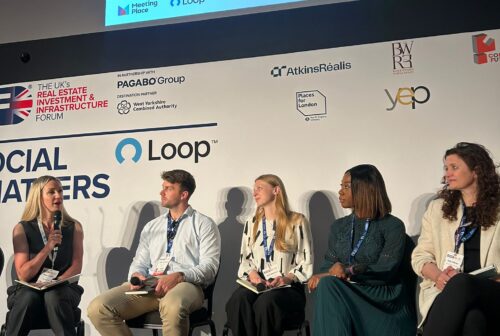What is the 'Impact of a Home'?

At UKREiiF, we discussed our new research that allows us to quantify the bricks and mortar and the powerful benefits of delivering the right homes in the right places.
Here are the headlines:
1. Homes are not inherently threatening
We see headlines across the country along the lines of ‘homes threaten village’. But most of us would not look at our homes and feel threatened or unsafe. In fact, most of us feel a great sense of relief when we walk up to our front door. We at Meeting Place want to change this narrative and use the figures to show the benefits of homes for both people and communities.
2. We can now compare development and hold people to account
In choosing Loop as the partner behind these metrics we can make place-based analyses. This means that we can attribute the real impact of a development in Newcastle and in Cornwall and compare the measurable change in people’s wellbeing, socio-economic outcomes and attainment.
3. It’s concerning we’ve got to this point without these metrics existing
Looking right back to the creation of the NHS, the messaging then was, if we don’t get homes right the public health service will fail. Why then, are we only just able to quantify the impact of homes on people’s ability to grow, heal and learn, aided by quality design?
This research digs deep, from minutiae details such as having a dishwasher, to large scale placemaking decisions around access to private gardens.
4. Messaging of metrics is key
We agreed that from a national to macro scale these metrics have a role. We need to use them to encourage shareholders to put their money into specific elements of development, to support national government housebuilding ambitions, to get local councils to look at the bigger picture in planning and to tell local people how design will change the lives of people around them.
5. This data should be available for all
We are making this publicly accessible via the Loop platform starting from this autumn. How can we expect the industry to change if we don’t share robust methodology and metrics and avoid overclaiming, ‘social washing’ and a spirit of distrust? Rather than a one-size-fits all approach, this can be adapted for each individual development.
6. Let’s look at the impact, from outset to operation
We can use this research in two ways. Firstly, to bring social impact into the conversation at the outset, when we are trying to determine the best way to design and masterplan a site, helping to weigh up housing mixes, green spaces and community assets.
Secondly, we can use it to reflect and draw on real people’s stories once homes are occupied. A powerful story was shared where a woman was asked to take a photo with the mayor at her new home. Her reflection was “this was the first time in ten years that her and her children hadn’t spent Christmas in temporary accommodation”. These stories shouldn’t be lost amongst the data; they are an integral part of the puzzle.
Huge thanks to Kelly Holland from Vistry, Lauren Bailey from Ridge and Partners LLP and Ethan Campbell from Loop by Pagabo for being part of the discussion and kick starting this exciting piece of work.
Want to learn more? Download the report here.
